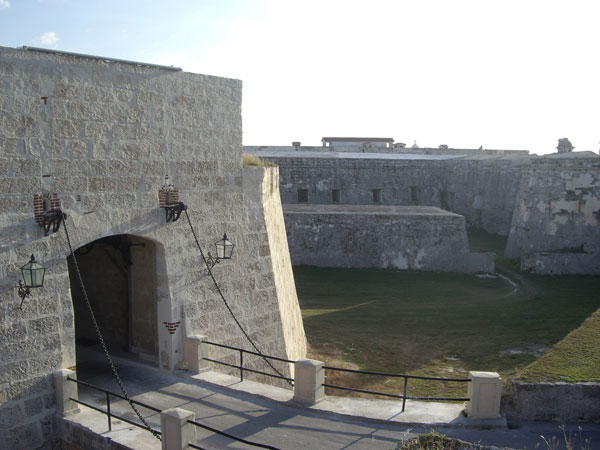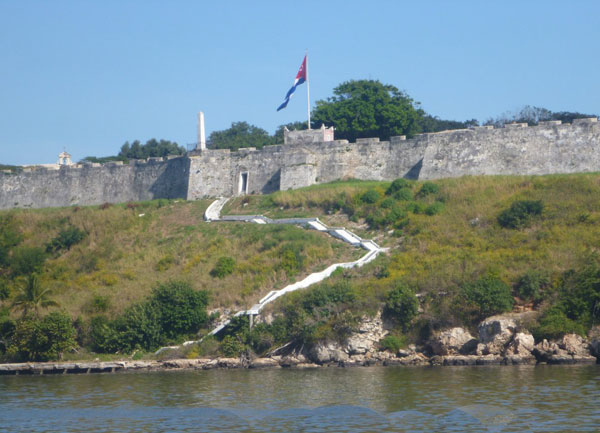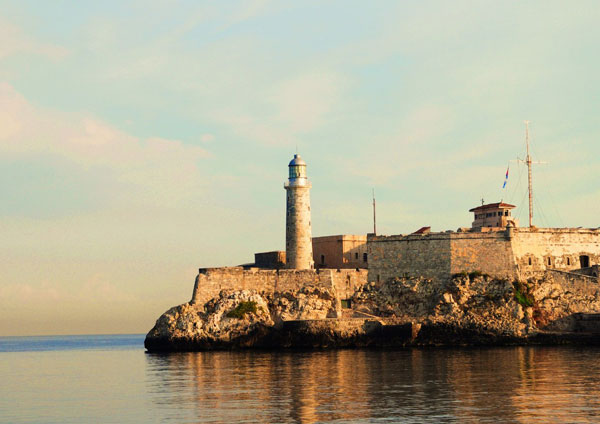Fortaleza de San Carlos de la Cabaña (Fort of Saint Charles), colloquially known as La Cabaña, is an 18th-century fortress complex, the third-largest in the Americas, located on the elevated eastern side of the harbor entrance in Havana, Cuba. The fort rises above the 200-foot (60 m) hilltop, along with Morro Castle (fortress).
After the capture of Havana by British forces in 1762, an exchange was soon made to return Havana to the Spanish, the controlling colonial power of Cuba, in exchange for Florida. A key factor in the British capture of Havana turned out to be the overland vulnerability of El Morro. This realization and the fear of further attacks following British colonial conquests in the Seven Years War prompted the Spanish to build a new fortress to improve the overland defense of Havana; King Carlos III of Spain began the construction of La Cabaña in 1763. Replacing earlier and less extensive fortifications next to the 16th-century El Morro fortress, La Cabaña was the second-largest colonial military installation in the New World by the time it was completed in 1774 (after the St. Felipe de Barajas fortification at Cartagena, Colombia), at great expense to Spain.
Over the next two hundred years the fortress served as a base for both Spain and later independent Cuba – La Cabaña has been used as a torture prison by the government of the dictators Fidel Castro and his younger brother Raúl.
In January 1959, communist rebels led by Fidel Castro seized La Cabaña; the defending Cuban Army unit offered no resistance and surrendered. Che Guevara used the fortress as a headquarters and military prison for several months. During his five-month tenure in that post (January 2 through June 12, 1959), Guevara oversaw the revolutionary tribunals and executions of suspected war criminals, political prisoners, and former members of Buró de Represión de Actividades Comunistas, Batista's secret police, massacred or disappeared.[1][2]
The complex is now part of a historical park, along with the El Morro fortress, and houses several museums open to the public. Every night a cannon is fired at 9pm, the so-called "El Cañonazo de las 9", a custom kept from colonial times signaling the closure of the gates in the city wall.












